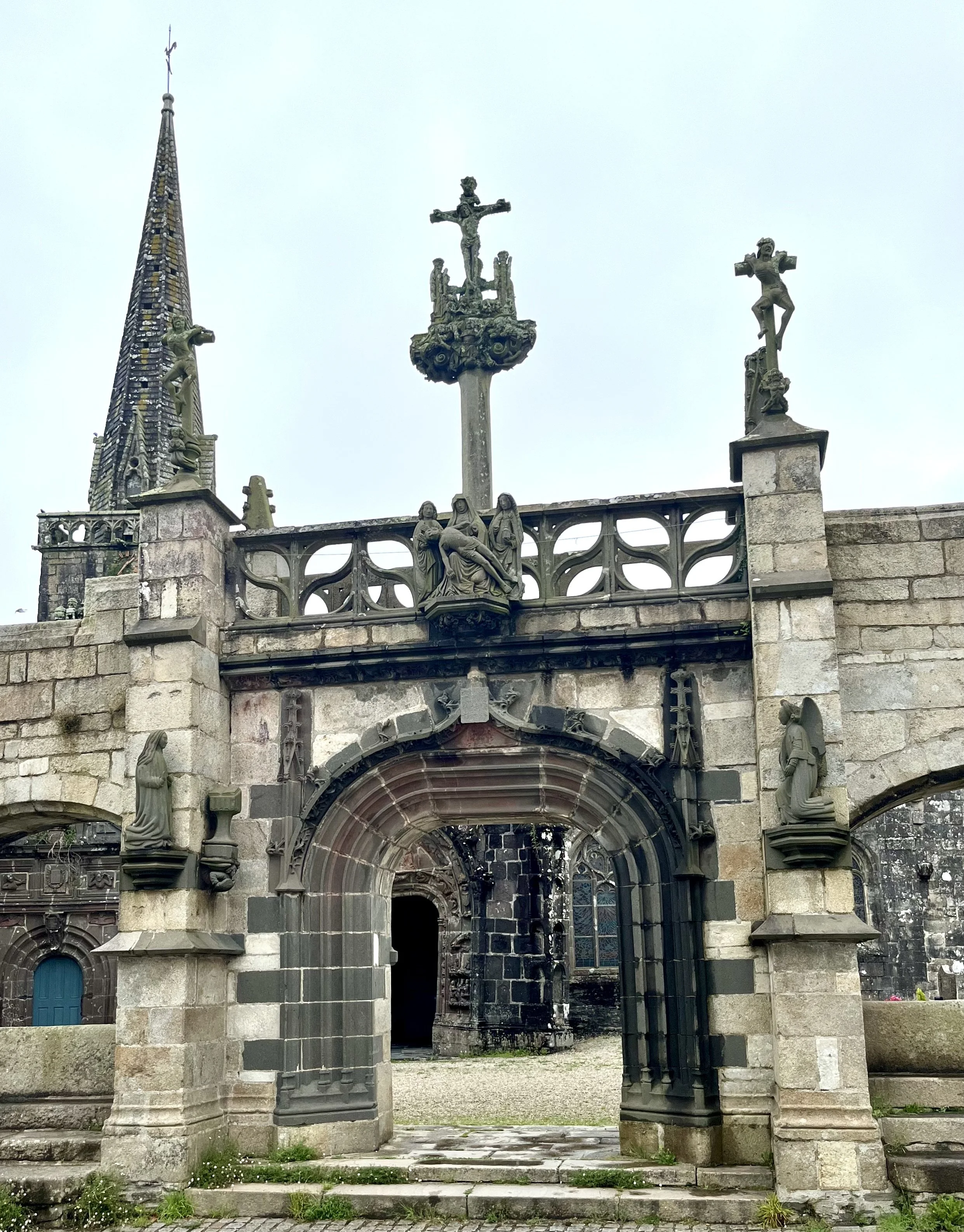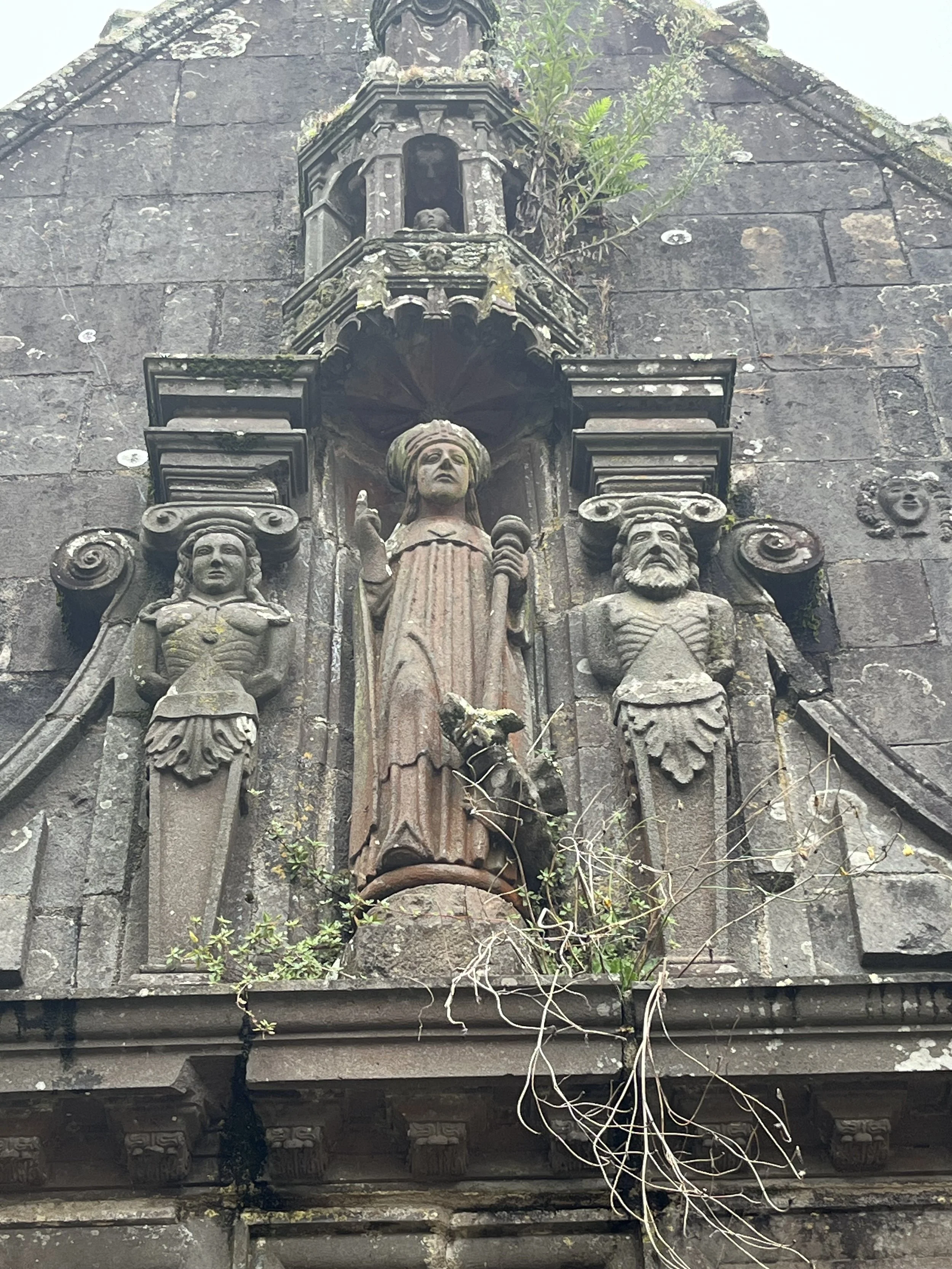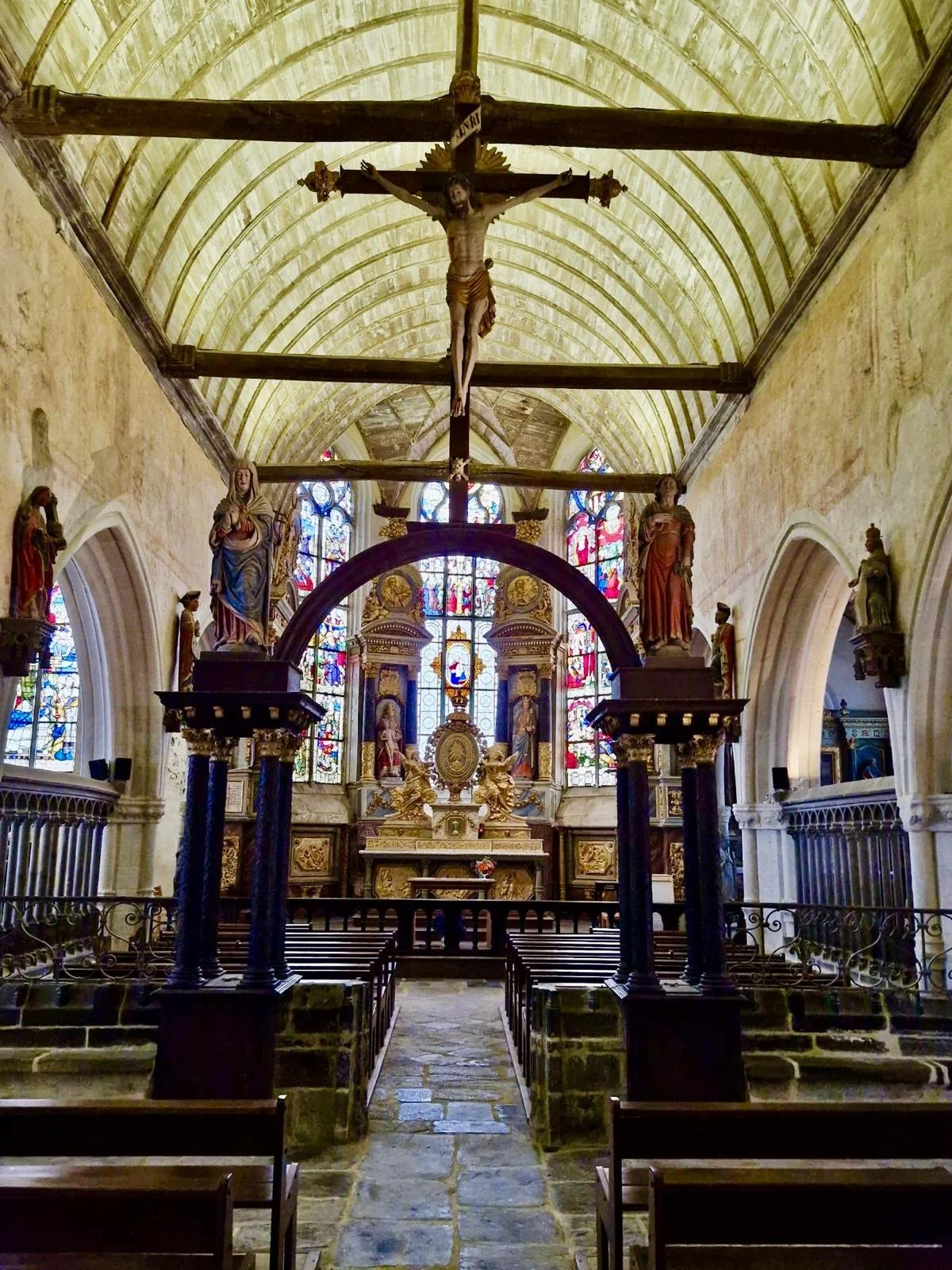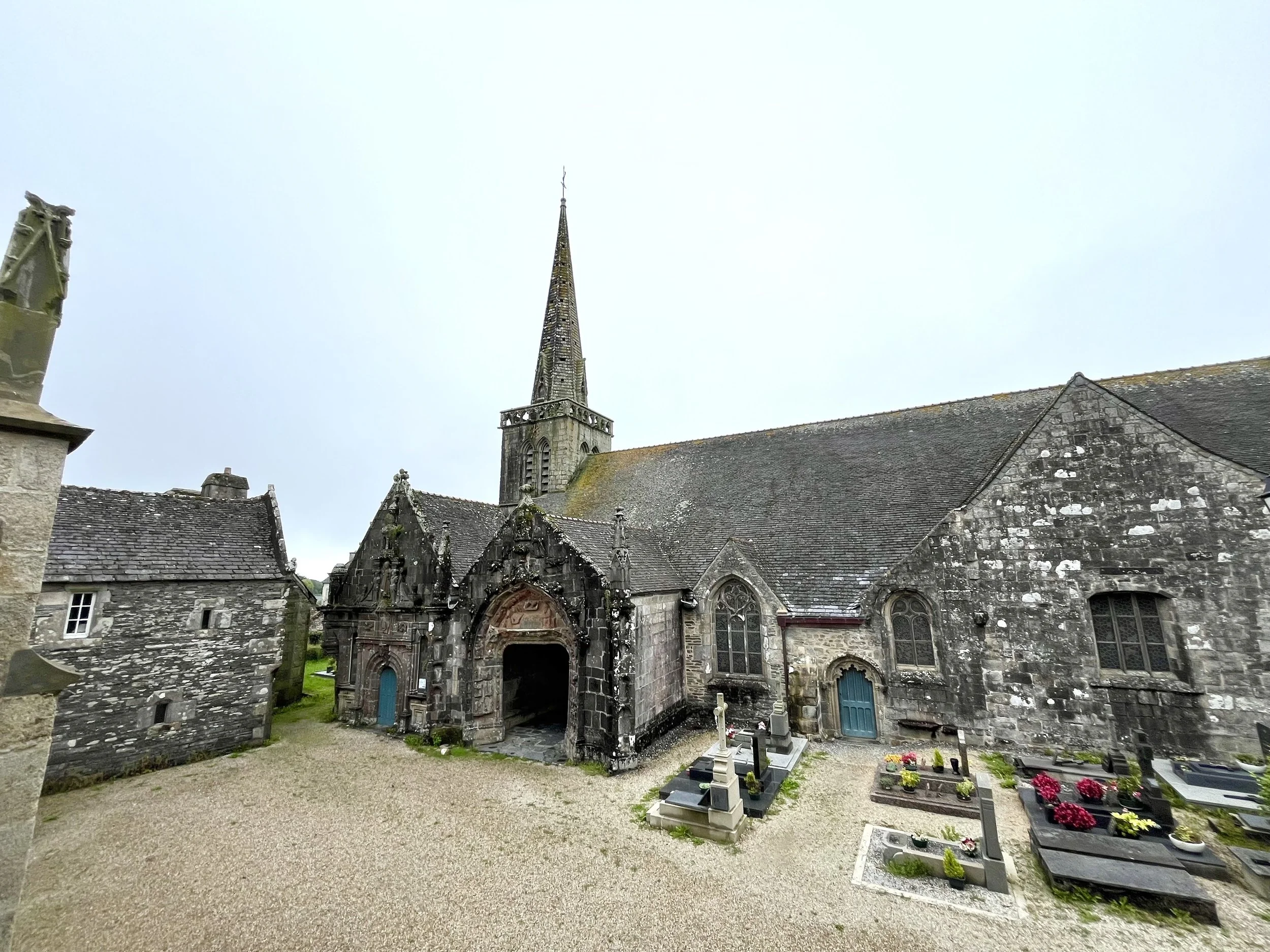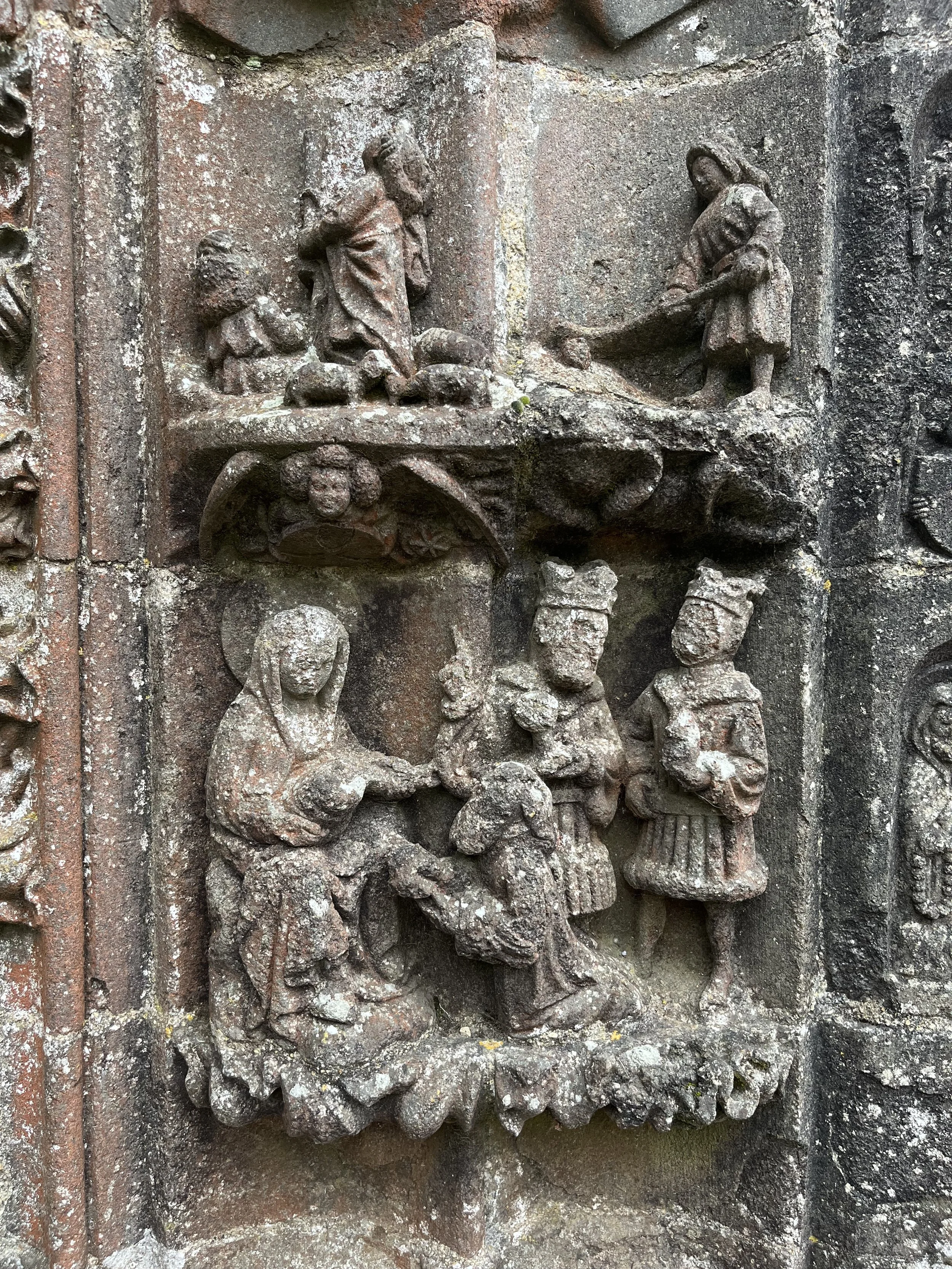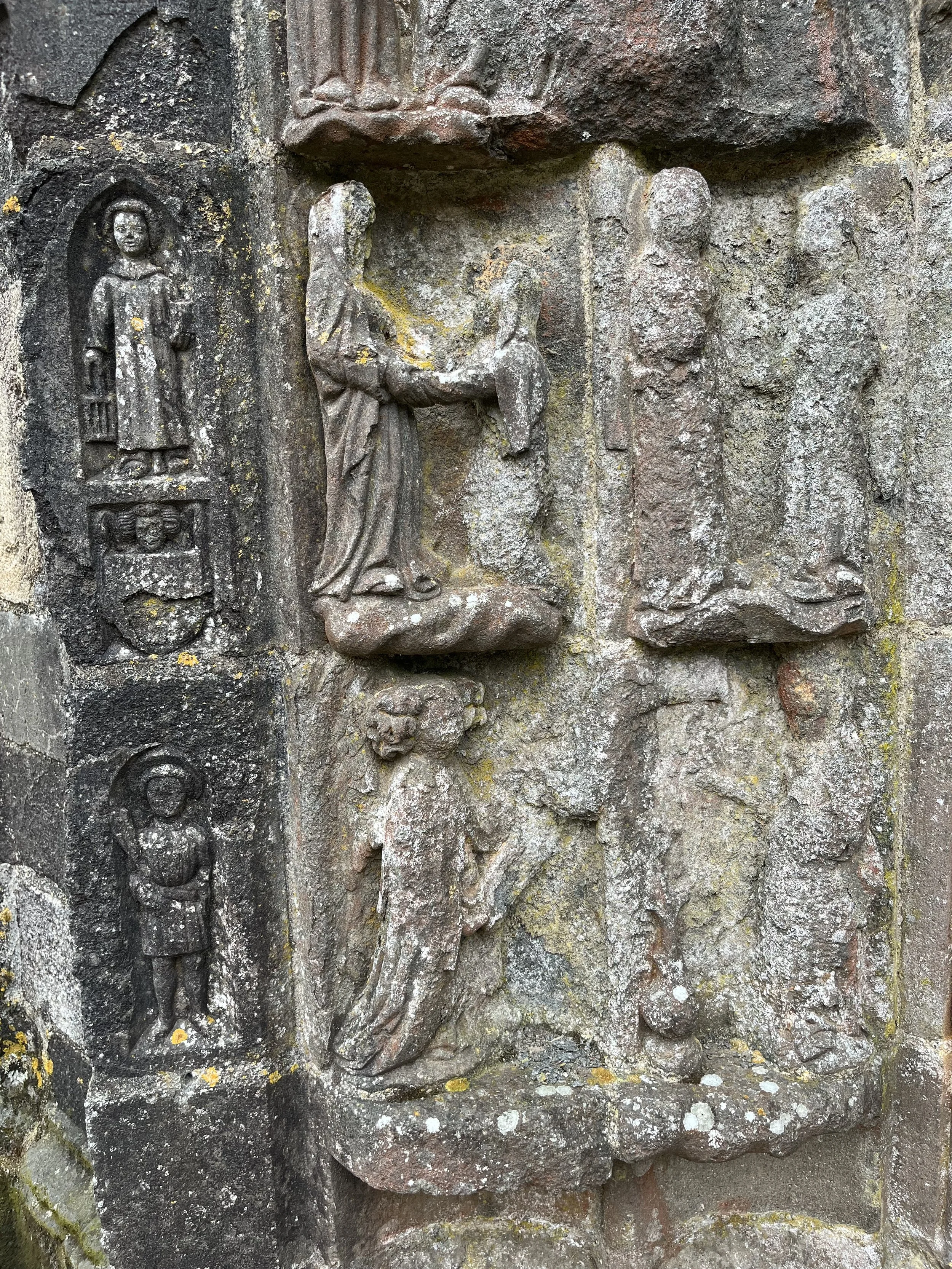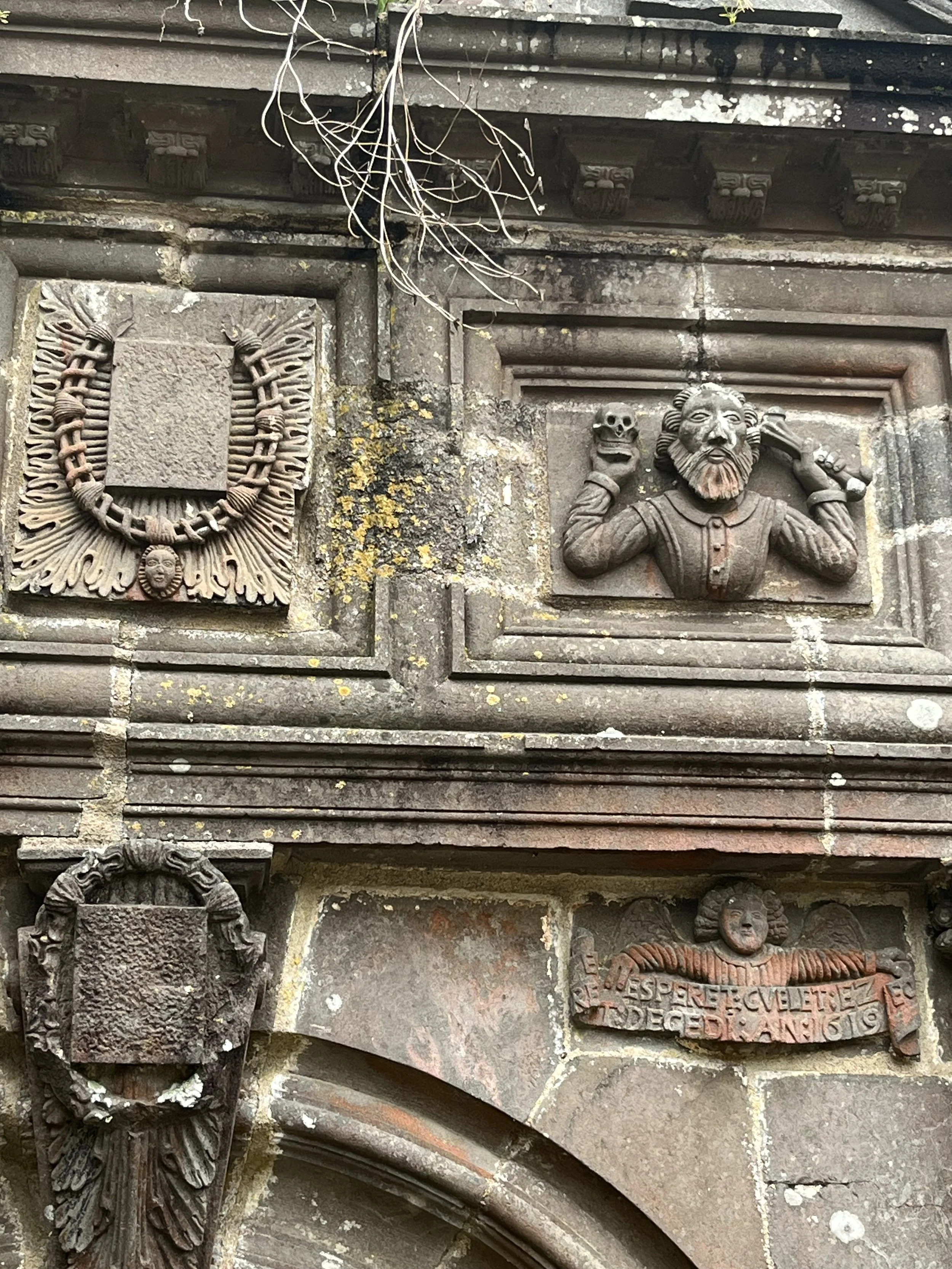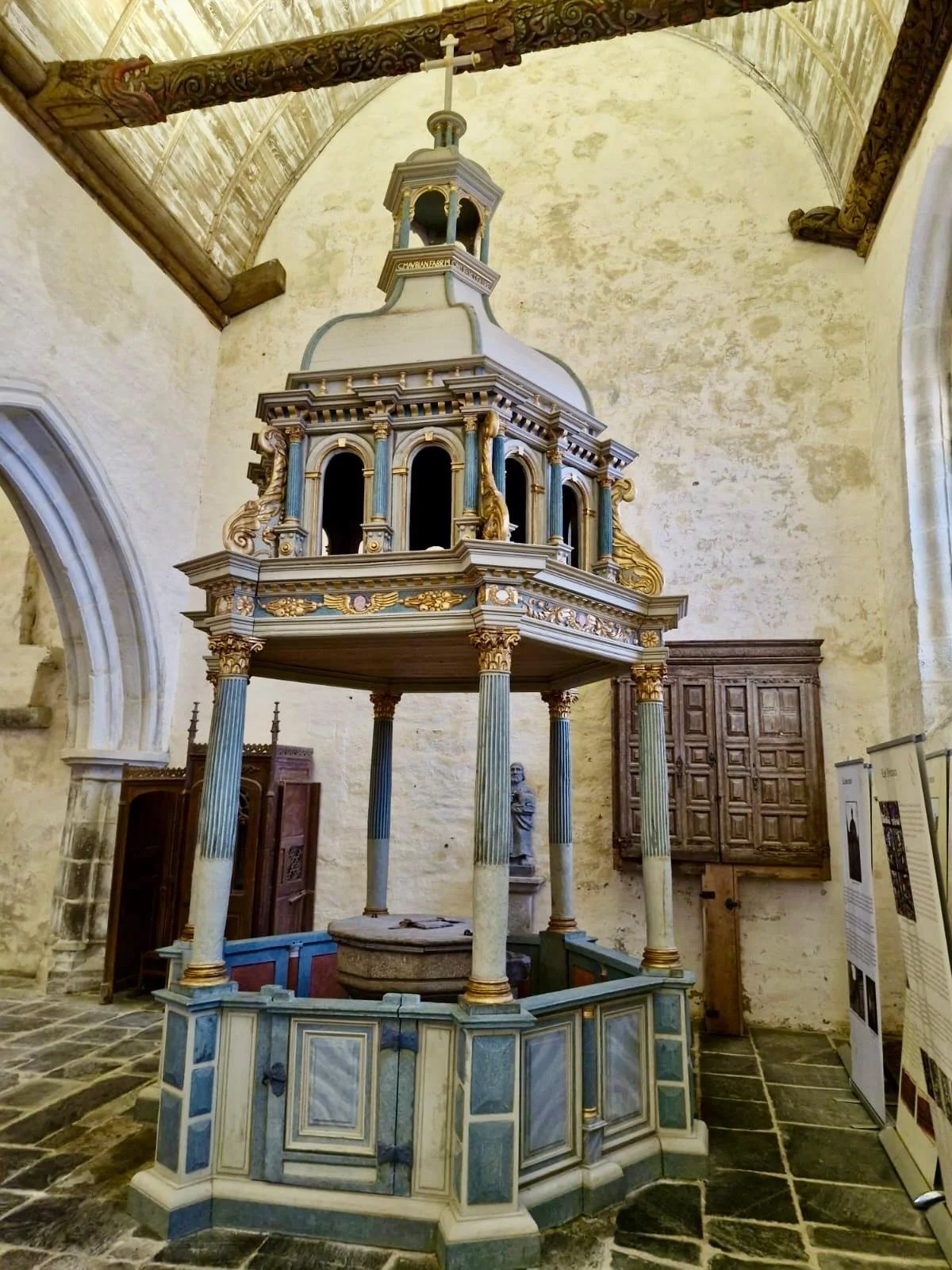Explore the Enclos Paroissiaux of Brittany: La Martyre & the church of Saint-Salomon
Welcome to the second installment in my series exploring Brittany’s unique enclos paroissiaux—the enclosed parish churchyards that are among the region’s most fascinating cultural and historical treasures. These remarkable sites offer more than just stunning architecture. They are living stories carved in stone, where centuries of faith, art, and Breton identity come alive.
Today, we journey to La Martyre, home to one of Brittany’s most exceptional parish closes and the historic Église Saint-Salomon.
Why Visit La Martyre? A Historic Pilgrimage Site with Stunning Gothic Architecture
La Martyre’s enclos paroissial is famous for being a former pilgrimage destination where the faithful venerated Salomon, a prominent Breton ruler tragically assassinated here in the 9th century. While Salomon was not a king, his memory shaped the spiritual life of this village for centuries.
Built and expanded over centuries—from the 11th through the 17th century—the church and its surrounding close reflect the parish’s historic wealth. This wealth came not only from pilgrimage but also from thriving local fairs attracting merchants from Brittany, Flanders, England, and beyond, as well as from flax and hemp cultivation.
Architectural Highlights: Steeple Inspired by Saint-Pol-de-Léon and Flamboyant Gothic Triumphal Gate
The towering steeple of Église Saint-Salomon is inspired by the elegant spires of the nearby cathedral of Saint-Pol-de-Léon, with foundations dating back to the 14th century or earlier—making it one of the eldest triumphal arches in the region.
Approaching the enclosure, the flamboyant Gothic triumphal gate immediately commands attention. Its stone tympanum is a masterpiece, richly detailed with scenes such as the smiling Virgin Mary and the angel announcing Christ’s birth to a group of shepherds. The gate also once served a practical purpose: a walkway above was used to oversee crowds during busy fairs and religious festivals.
The Italianate Ossuary and the Stoup with the Ankou: A Powerful Reminder of Mortality
Next to the gate stands the serene ossuary, built in 1619 in an elegant Italianate style featuring volutes, atlantes, and the striking "Cariatide aux bandelettes." Nearby, inside the south porch, is a surprising baptismal stoup guarded by the Ankou, the Breton personification of death, depicted holding a spear and decapitating a young man—a vivid reminder of life’s fragility.
An inscription on the ossuary’s Renaissance façade translates: “Death, the Last Judgment, cold Hell, man must shiver when he thinks about them,” echoing the parish’s sobering message about mortality.
Inside the Église Saint-Salomon: Medieval Masterpieces and Colorful Frescoes
Entering through the south porch (circa 1450), sculpted from local kersanton stone, visitors can still glimpse traces of its original vibrant paint. The porch’s tympanum tells stories from Christ’s life with exquisite detail, connecting us back to the medieval origins of Brittany’s "great parish closes."
Inside, the vaulted nave reveals rare 14th-century frescoes and the coats of arms of the Rohan family, patrons who, alongside the dukes of Brittany, helped fund ambitious expansions during the 16th and 17th centuries. The large, flat Beaumanoir-style chevet is lit by an extraordinary stained-glass Crucifixion window created in 1535 by the Quimper workshop of Le Sodec, inspired by German engraver Jost von Neckar. The window’s colors and gilding sparkle as if anticipating the heavenly splendors beyond.
Expansion and Artistic Richness: The Second Nave and Stunning Stained Glass
To accommodate the growing village and influx of pilgrims and merchants, a second nave was added in the late 16th century, perfectly mirroring the original to create an impressive, balanced interior. The Dormition of the Virgin stained glass (1560) here offers a poignant portrayal of Mary’s peaceful passing and celestial coronation, with faces expressing Italian Renaissance influence.
Baroque High Altar and Unique Breton Statues
At the heart of the choir, the richly carved baroque high altar is said to mark Salomon’s burial site. Surrounding it, life-size statues include a remarkable Breton rendition of the Holy Trinity, a testament to local devotional artistry.
Treasures Throughout: Pulpit, Baptismal Fonts, and Polychrome Woodwork
Other highlights include a finely carved 18th-century wooden pulpit, baptismal fonts from 1635 with an elegant baldachin, Renaissance-style side altars, and colorful sablières carved with scenes from rural Breton life—from biniou (Breton bagpipe) players to farming and funerals—bringing the spirit of the community into the church’s very fabric.
The Jesuit-Style Sacristy: A Late Baroque Gem
Finally, the monumental sacristy built between 1697 and 1699 in Jesuit style—with its distinctive quadrilobed plan and imposing dome—adds a sophisticated Baroque flourish to this otherwise deeply traditional Breton parish close.
La Martyre’s enclos paroissial is a must-visit for travelers seeking authentic Breton history, art, and spirituality. Its blend of Gothic architecture, Renaissance artistry, and deeply rooted local traditions makes it a captivating stop on any cultural itinerary in Brittany.
Next on our journey through Brittany’s enclos paroissiaux is Locmélar—another fascinating site filled with history and artistry. Stay tuned for more discoveries!


